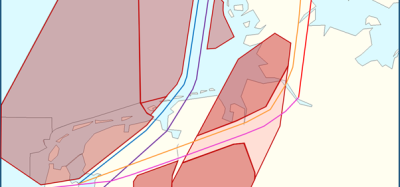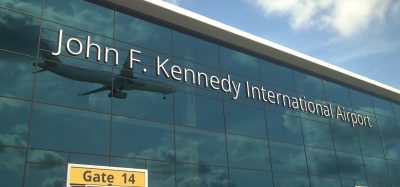Collaboration in Helsinki
- Like
- Digg
- Del
- Tumblr
- VKontakte
- Buffer
- Love This
- Odnoklassniki
- Meneame
- Blogger
- Amazon
- Yahoo Mail
- Gmail
- AOL
- Newsvine
- HackerNews
- Evernote
- MySpace
- Mail.ru
- Viadeo
- Line
- Comments
- Yummly
- SMS
- Viber
- Telegram
- Subscribe
- Skype
- Facebook Messenger
- Kakao
- LiveJournal
- Yammer
- Edgar
- Fintel
- Mix
- Instapaper
- Copy Link
Posted: 18 February 2013 | Timo Suorto, CDM Project Manager at Finavia Helsinki-Vantaa Airport | No comments yet
After four years of planning, testing and hard work, on 2 October 2012 Helsinki Airport became the first Nordic airport and only the seventh European airport to adopt the Airport Collaborative Decision Making (A-CDM) pro – cedure. By being one of the frontrunners in adopting Airport CDM, Timo Suorto, CDM Project Manager at Finavia Helsinki-Vantaa Airport explains how Helsinki Airport aims to smooth passengers’ travelling experience while strengthening its position as the leading North European transit airport.
After four years of planning, testing and hard work, on 2 October 2012 Helsinki Airport became the first Nordic airport and only the seventh European airport to adopt the Airport Collaborative Decision Making (A-CDM) pro – cedure. By being one of the frontrunners in adopting Airport CDM, Timo Suorto, CDM Project Manager at Finavia Helsinki-Vantaa Airport explains how Helsinki Airport aims to smooth passengers’ travelling experience while strengthening its position as the leading North European transit airport.
Airport CDM is a procedure developed by EUROCONTROL (European Organisation for the Safety of Air Navigation) with the goal of developing airport operations and benefitting the whole European airline industry. It involves all airport partners – airport operators, airlines, air traffic control, Network Operators (the Central Flow Management Unit in Brussels) and ground handlers – to collaborate more efficiently and share their data more openly to improve the overall effectiveness of operations at the airport. Airport CDM especially focuses on improving aircraft turnarounds and the pre-departure sequencing processes to deliver more accurate Target Take Off Times and in consequence, improving flight punctuality and reducing flight delays.
Airport CDM offers these benefits to an individual airport, but it also enables more efficient use of the European airspace as a whole. As the more accurate Target Take Off Times are being shared between Europe’s air traffic management system, operated by EUROCONTROL, en-route and sector planning will become more accurate. As more and more European airports adopt Airport CDM, the bene – fits will naturally increase. This growth, in turn, benefits the whole European airline industry.
Airport CDM is also an integral part of EUROCONTROL’S DMEAN (Dynamic Manage – ment of European Airspace Network) and SESAR (Single European Sky) programmes that aim to improve the air traffic and airspace usage in Europe.
Currently, adopting Airport CDM is not mandatory for European airports, but this may change in the near future. It is already clear, however, that there are substantial benefits to be gained by adopting Airport CDM, and that is exactly why Helsinki Airport wanted to be in the A-CDM frontline.
A-CDM brings less emissions and more punctuality
Helsinki Airport is Finland’s biggest airport in terms of size, traffic and the number of direct connections. Given Finland’s central location for air traffic between Europe and Asia, one of the goals of Finavia – which maintains a network of 25 airports in Finland and the country’s air navigation system – is to further develop Helsinki Airport as one of the most important transit hubs in Northern Europe. So, it is no wonder that with the early adoption of Airport CDM, Finavia aims to achieve benefits to operations and to offer Helsinki Airport passengers an even better airport experience.
Airport CDM is a profitable procedure – for example, better information sharing improves flight punctuality and facilitates cooperation; the general development of operations can create savings; and aircraft waiting at the gates with their engines turned off will cut emissions and fuel costs.
“After adopting the A-CDM in October 2012, we are already seeing the benefits of it,” says Timo. “The average taxiing times of aircraft have been reduced by 36 seconds per aircraft. With about 260 flights per day at Helsinki Airport, this means a total of more than 150 minutes less taxiing time bringing fuel savings and reducing emissions.”
Finavia’s aim is to reduce the engine idling time about three minutes per aircraft, which would equate to a reduction of around 5,100 tonnes CO2 emissions annually.
For passengers, most of Airport CDM’s effects are not directly visible. Probably the most prominent change will be noticed at the gates. At airports that have not adopted CDM, the aircraft might have to wait for the takeoff clearance on the taxiway. At CDM airports, the aircraft will now wait for clearance at the gate with its engines turned off. When the aircraft receives the clearance for takeoff, the pilot will start its engines and taxi to the runway for the takeoff.
Although Airport CDM awards more punctual flights and less flight delays, the fact that the aircraft waits at the gate with its engines turned off might still cause some passengers to think that their flight is delayed even when it is on schedule.
“It is important that passengers get clear and coherent information about A-CDM and how it affects their airport and flight experience. There are still some challenges in informing passengers in Europe that we are currently working in cooperation with other CDM airports,” explains Timo.
Helsinki is one of the A-CDM pioneers
Helsinki Airport is the seventh European airport to adopt Airport CDM after Münich, Frankfurt, Brussels, Paris CDG, London Heathrow and Amsterdam. “Helsinki Airport has been active in developing Airport CDM since the beginning of 2000s,” Timo says. “From 2002 to 2004, Helsinki Airport took part in one of the first Airport CDM trial projects in cooperation with Stockholm- Arlanda Airport and EUROCONTROL. Finavia has also actively taken part in EUROCONTROL’S A-CDM development work groups especially in developing operations for winter conditions.”
After the pilot project, the concept of A-CDM was not fully realised and still needed development. But in 2008, Helsinki Airport started preparing for the implementation of A-CDM. Fast forward four years, and Helsinki is now the first Nordic airport to have A-CDM. Since A-CDM is designed for airports that have more than 50,000 flight operations per year, Helsinki Airport will be the only CDM airport in Finland.
Finavia’s ‘snow-how’
Finavia’s airports and Helsinki especially are known for their so-called ‘snow-how’. When some other European airports have difficulties in dealing with even small snowfalls, Helsinki Airport is well prepared for the winter, since heavy snowing and intensively cold weather are business as usual in Finland. It can be said that the success of Helsinki’s position as a popular transit airport relies on both punctual and smooth flights between Europe and Asia and effective winter maintenance even during the harshest winter conditions.
Winter conditions have not shut down traffic at Helsinki Airport in the past nine years, and the last time it happened, back in winter 2003/4, a snow storm and a technical failure occurred simultaneously.
Implementing A-CDM procedures to de-icing and anti-icing operations are expected to enhance Helsinki’s ‘snow-how’ even further. “One big A-CDM milestone for us was the arrival of the first major snow falls,” explains Timo. “And during the last week of November, the snow arrived in bucket loads. We managed to cope with the A-CDM procedures during the first snow storms, but there is still quite a lot work to be done before we can utilise A-CDM procedures fully in de-icing and antiicing operations.”
Collaboration is key to success
EUROCONTROL’s original goal was for A-CDM procedures to be adopted by all of the 54 European airports that have more than 50,000 flight operations per year by the end of 2013. This now seems like a long shot, as there are currently only seven CDM airports, and only 25 European airports are expected to adopt A-CDM by the end of 2013.
What then, are the keys to success that have helped Helsinki Airport to implement Airport CDM successfully and in line with EUROCONTROL’s targets, when other airports struggle to meet them? “I think it is due to many factors,” says Timo. “Firstly, we have had support from and active cooperation with our airport partners – the airlines, ground handling comp anies and everyone else. Secondly, implementing A-CDM requires a lot of time and resources. The last 18 months in particular have been a very busy period. At Helsinki Airport, we have been extremely fortunate to have a tight group of dedicated and motivated people working on the A-CDM implementation. It has really been a pleasure to work with them.”
Even though implementing A-CDM took time and required staff resources, Timo emphasises that Finavia covered all the implementation costs and that A-CDM has not created any additional costs to customers or other stakeholders.
Timo, who from the start has been intensively involved in adopting Airport CDM at Helsinki Airport, admits that it has not been a walk in a park: “We have had success but also more challenging times in this process. But we never had any insecurities about whether we would succeed or not. Instead, our team had great expectations and enthusiasm to make sure we succeeded in A-CDM implementation.”
The local implementation of A-CDM at Helsinki Airport in October 2012 went as planned. According to Timo, this was largely due to intense preparation: “Everyone at Helsinki Airport was well aware and well prepared to welcome Airport CDM here. The big challenge in implementing procedures like this is that we only see if everything works 100 per cent after it is applied in practice. We did intensive testing to make sure everything was in place for the implementation, and it was very satisfactory for everybody to see that everything came together as good as it did in the end.
“Airport CDM is not just about implementing procedures or changing processes. Since it has vast effects to partners at the airport, from airlines and airport operators to air traffic control and ground handlers, it is also a significant culture change.”
Positive first experiences ahead of full integration
The full integration of Helsinki Airport into EUROCONTROL’s Network Management System was scheduled to take place in the beginning of 2013. And as of December 2012, the general experiences of Airport CDM at Helsinki Airport have been positive.
With the final push in terms of full integration in progress, Timo is enthusiastically waiting for the full potential of Airport CDM to unfold. This will enable the A-CDM team at Helsinki Airport to concentrate on developing the procedures further in close cooperation with the airport partners. “The feedback we have received from our airport partners has exceeded our expectations, and it has been very constructive. This gives us a good foundation to develop our operations,” concludes Timo.

















